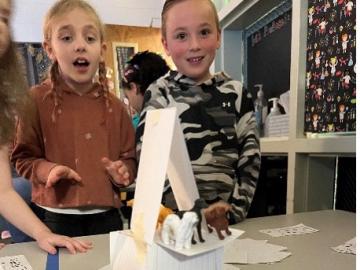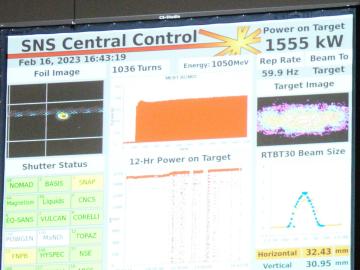Filter News
Area of Research
- (-) Neutron Science (149)
- (-) Sensors and Controls (3)
- Advanced Manufacturing (18)
- Biological Systems (15)
- Biology and Environment (142)
- Biology and Soft Matter (5)
- Building Technologies (5)
- Chemical and Engineering Materials (3)
- Chemistry and Physics at Interfaces (11)
- Clean Energy (335)
- Climate and Environmental Systems (9)
- Computational Biology (5)
- Computational Chemistry (5)
- Computational Engineering (3)
- Computer Science (7)
- Data (1)
- Earth Sciences (1)
- Electricity and Smart Grid (1)
- Energy Frontier Research Centers (14)
- Energy Sciences (2)
- Fossil Energy (2)
- Fuel Cycle Science and Technology (3)
- Functional Materials for Energy (14)
- Fusion and Fission (49)
- Fusion Energy (9)
- Geographic Information Science and Technology (3)
- Isotope Development and Production (1)
- Isotopes (29)
- Materials (326)
- Materials Characterization (2)
- Materials for Computing (26)
- Materials Synthesis from Atoms to Systems (13)
- Materials Under Extremes (12)
- National Security (69)
- Neutron Data Analysis and Visualization (2)
- Nuclear Science and Technology (51)
- Nuclear Systems Modeling, Simulation and Validation (1)
- Nuclear Systems Technology (1)
- Quantum Condensed Matter (4)
- Quantum information Science (5)
- Reactor Technology (1)
- Renewable Energy (2)
- Supercomputing (260)
- Transportation Systems (9)
News Type
News Topics
- 3-D Printing/Advanced Manufacturing (6)
- Artificial Intelligence (5)
- Big Data (2)
- Bioenergy (5)
- Biology (5)
- Biomedical (9)
- Biotechnology (1)
- Chemical Sciences (1)
- Clean Water (2)
- Climate Change (1)
- Composites (1)
- Computer Science (13)
- Coronavirus (8)
- Cybersecurity (1)
- Decarbonization (2)
- Energy Storage (4)
- Environment (6)
- Fossil Energy (1)
- Frontier (1)
- Fusion (1)
- High-Performance Computing (2)
- Machine Learning (3)
- Materials (11)
- Materials Science (20)
- Mathematics (1)
- Microscopy (2)
- Nanotechnology (8)
- National Security (2)
- Neutron Science (73)
- Nuclear Energy (2)
- Physics (8)
- Polymers (1)
- Quantum Computing (1)
- Quantum Science (5)
- Security (3)
- Space Exploration (2)
- Summit (6)
- Sustainable Energy (2)
- Transportation (3)
Media Contacts

Nine engineers from ORNL visited 10 elementary and middle school classrooms in three school districts during National Engineers Week, Feb. 21 to 24, 2023, describing and demonstrating the excitement of the engineering profession to more than 300 Tennessee students.

Scientists have long sought to better understand the “local structure” of materials, meaning the arrangement and activities of the neighboring particles around each atom. In crystals, which are used in electronics and many other applications, most of the atoms form highly ordered lattice patterns that repeat. But not all atoms conform to the pattern.

ORNL has entered a strategic research partnership with the United Kingdom Atomic Energy Authority, or UKAEA, to investigate how different types of materials behave under the influence of high-energy neutron sources. The $4 million project is part of UKAEA's roadmap program, which aims to produce electricity from fusion.

A scientific instrument at ORNL could help create a noninvasive cancer treatment derived from a common tropical plant.

ORNL's Spallation Neutron Source set a world record when its linear accelerator reached an operating power of 1.55 megawatts, which improves on the facility’s original design capability.

ORNL staff members played prominent roles in reports that won one Distinction award and two Excellence awards in the 2022 Alliance Competition of the Society for Technical Communication. PSD's Karren More and Bruce Moyer participated.

Natural gas furnaces not only heat your home, they also produce a lot of pollution. Even modern high-efficiency condensing furnaces produce significant amounts of corrosive acidic condensation and unhealthy levels of nitrogen oxides

The truth is neutron scattering is not important, according to Steve Nagler. The knowledge gained from using it is what’s important

Paul Langan will join ORNL in the spring as associate laboratory director for the Biological and Environmental Systems Science Directorate.

While studying how bio-inspired materials might inform the design of next-generation computers, scientists at ORNL achieved a first-of-its-kind result that could have big implications for both edge computing and human health.




